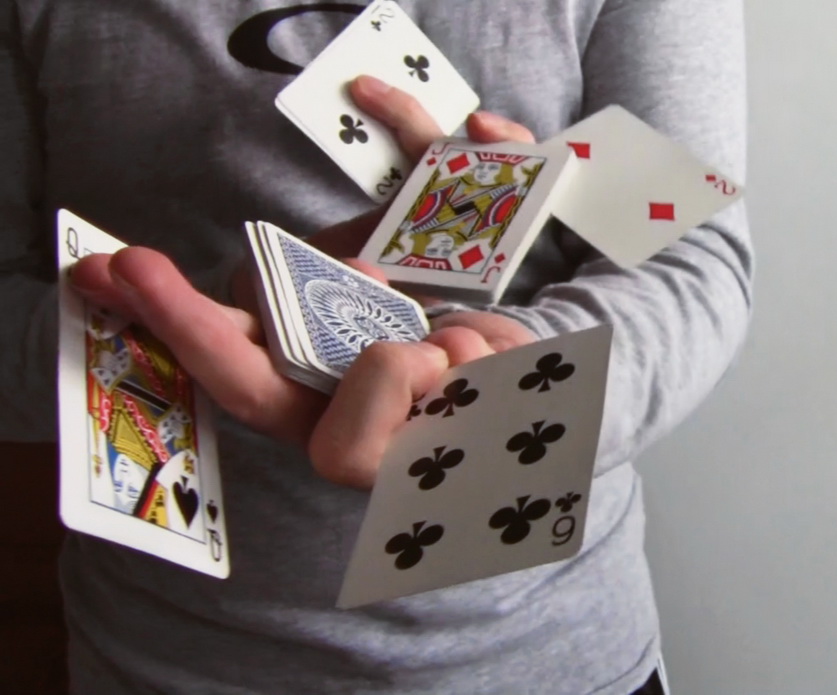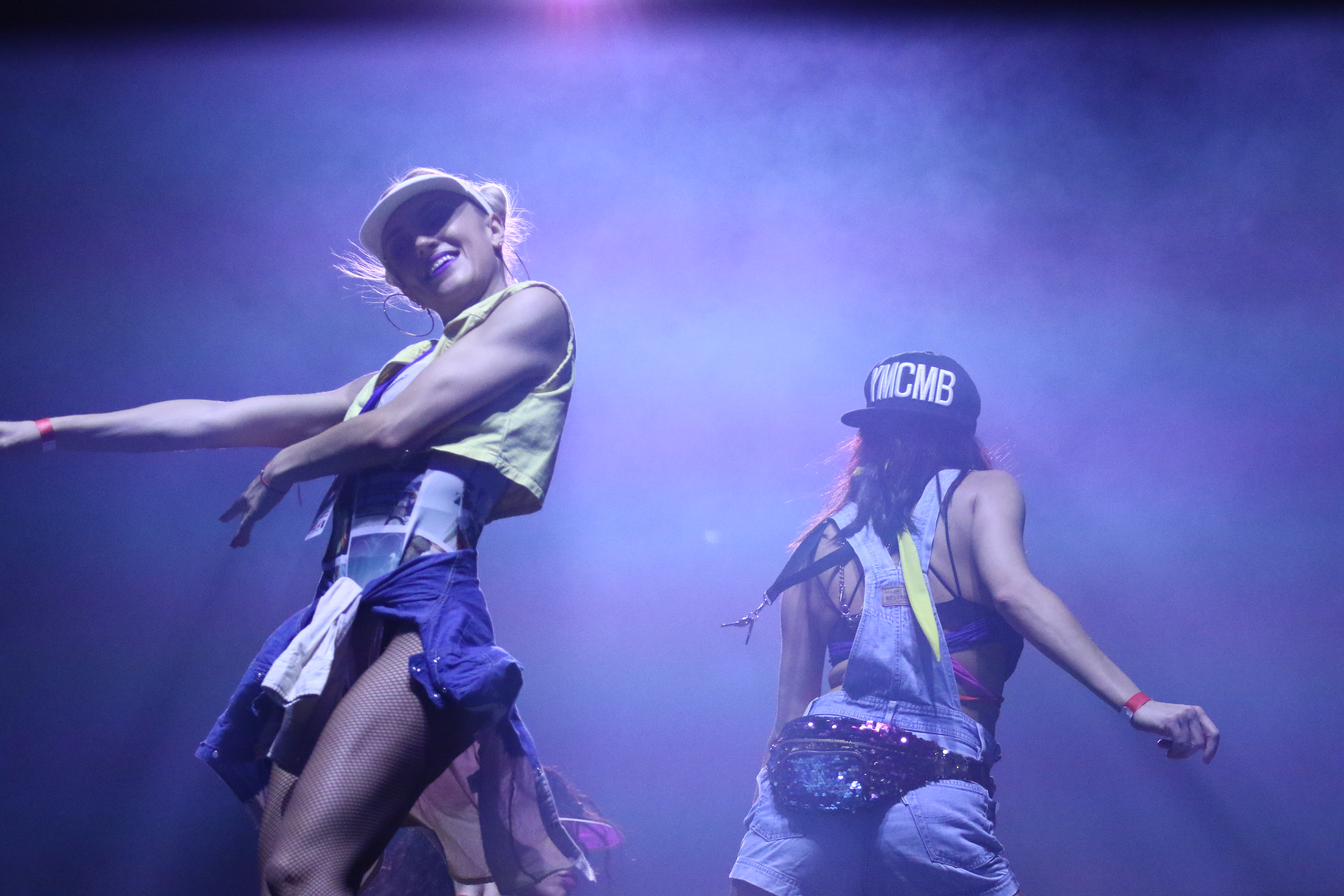|
Dice Stacking
Dice stacking is a performance art, akin to juggling or sleight-of-hand, in which the performer scoops dice off a flat surface with a dice cup and then sets the cup down while moving it in a pattern that stacks the dice into a vertical column via centripetal force and inertia. Various dice arrangements, colors of dice, scooping patterns and props allow for many degrees of complexity and difficulty. Dice stacking is usually performed with canceled casino dice, as their square edges and heavy weight give them an advantage when being stacked. In Germany, the first national dice stacking championship tournament took place in May 2008. Tournament rules included the use of a special designed DiceBoard for players which shows the different prescribed moves. There are two disciplines: the "full-area" discipline and the "speed-area" discipline. Three of the most common dice stacks are the normal stack, the fast stack, and the point stack. See also *Sport stacking Sport is a physi ... [...More Info...] [...Related Items...] OR: [Wikipedia] [Google] [Baidu] |
Performance Art
Performance art is an artwork or art exhibition created through actions executed by the artist or other participants. It may be witnessed live or through documentation, spontaneously developed or written, and is traditionally presented to a public in a fine art context in an interdisciplinary mode. Also known as artistic action, it has been developed through the years as a genre of its own in which art is presented live. It had an important and fundamental role in 20th century avant-garde art. It involves five basic elements: time, space, body, presence of the artist, and the relation between the artist and the public. The actions, generally developed in art galleries and museums, can take place in any kind of setting or space, and during any time period. Its goal is to generate a reaction, sometimes with the support of improvisation and a sense of aesthetics. The themes are commonly linked to life experiences of the artist themselves, the need for denunciation or social critic ... [...More Info...] [...Related Items...] OR: [Wikipedia] [Google] [Baidu] |
Juggling
Juggling is a physical skill, performed by a juggler, involving the manipulation of objects for recreation, entertainment, art or sport. The most recognizable form of juggling is toss juggling. Juggling can be the manipulation of one object or many objects at the same time, most often using one or two hands but other body parts as well, like feet or head. Jugglers often refer to the objects they juggle as ''props''. The most common props are balls, clubs, or rings. Some jugglers use more dramatic objects such as knives, fire torches or chainsaws. The term ''juggling'' can also commonly refer to other prop-based manipulation skills, such as diabolo, plate spinning, devil sticks, poi, cigar boxes, contact juggling, hooping, yo-yo, hat manipulation and kick-ups. Etymology The words ''juggling'' and ''juggler'' derive from the Middle English ''jogelen'' ("to entertain by performing tricks"), which in turn is from the Old French '' jangler''. There is also the wi ... [...More Info...] [...Related Items...] OR: [Wikipedia] [Google] [Baidu] |
Sleight-of-hand
Sleight of hand (also known as prestidigitation or ''legerdemain'' () comprises fine motor skills used by performing artists in different art forms to entertain or manipulate. It is closely associated with close-up magic, card magic, card flourishing and stealing. Because of its heavy use and practice by magicians, sleight of hand is often confused as a branch of magic; however, it is a separate genre of entertainment and many artists practice sleight of hand as an independent skill. Sleight of hand pioneers with worldwide acclaim include Dan and Dave, Ricky Jay, Derek DelGaudio, David Copperfield, Yann Frisch, Norbert Ferré, Dai Vernon, Jerry Sadowitz, Cardini, Tony Slydini, Helder Guimarães and Tom Mullica. Etymology and history The word ''sleight'', meaning "the use of dexterity or cunning, especially so as to deceive", comes from the Old Norse. The phrase ''sleight of hand'' means "quick fingers" or "trickster fingers". Common synonyms of Latin and French in ... [...More Info...] [...Related Items...] OR: [Wikipedia] [Google] [Baidu] |
Dice
A die (: dice, sometimes also used as ) is a small, throwable object with marked sides that can rest in multiple positions. Dice are used for generating random values, commonly as part of tabletop games, including dice games, board games, role-playing games, and games of chance. A traditional die is a cube with each of its six faces marked with a different number of dots ( pips) from one to six. When thrown or rolled, the die comes to rest showing a random integer from one to six on its upper surface, with each value being equally likely. Dice may also have other polyhedral or irregular shapes, may have faces marked with numerals or symbols instead of pips and may have their numbers carved out from the material of the dice instead of marked on it. Loaded dice are specifically designed or modified to favor some results over others, for cheating or entertainment purposes. History Dice have been used since before recorded history, and their origin is uncertain. It is hypoth ... [...More Info...] [...Related Items...] OR: [Wikipedia] [Google] [Baidu] |
Sport Stacking
Sport is a physical activity or game, often competitive and organized, that maintains or improves physical ability and skills. Sport may provide enjoyment to participants and entertainment to spectators. The number of participants in a particular sport can vary from hundreds of people to a single individual. Sport competitions may use a team or single person format, and may be open, allowing a broad range of participants, or closed, restricting participation to specific groups or those invited. Competitions may allow a "tie" or "draw", in which there is no single winner; others provide tie-breaking methods to ensure there is only one winner. They also may be arranged in a tournament format, producing a champion. Many sports leagues make an annual champion by arranging games in a regular sports season, followed in some cases by playoffs. Sport is generally recognised as system of activities based in physical athleticism or physical dexterity, with major competiti ... [...More Info...] [...Related Items...] OR: [Wikipedia] [Google] [Baidu] |
Stacking Five Dice
Stacking may refer to: Arts and media * ''Stacking'' (video game), a 2011 game from Double Fine * ''Stacking'', a 1987 TV movie directed and produced by Martin Rosen * Stacking, a technique in broadcast programming Language * Consonant stacking, a feature of some South Asian writing systems * Verb stacking, a grammatical phenomenon involving concatenation of verbs Science and technology * Stacking (chemistry), an attractive, noncovalent interaction between aromatic rings * Focus stacking, an image processing technique in photography * Image stacking, a form of speckle imaging * Block-stacking problem, a puzzle in statics * Stacking, a technique used in reflection seismology * Stacking, a type of ensemble learning in machine learning * Stacking, the assembly of a multistage rocket Sport * Stacking, a strategy used in the sport of pickleball * Dice stacking, a performance art involving dice * Racial stacking, a concept relating to positional segregation in sports * Sport stack ... [...More Info...] [...Related Items...] OR: [Wikipedia] [Google] [Baidu] |
Performing Arts
The performing arts are arts such as music, dance, and drama which are performed for an audience. They are different from the visual arts, which involve the use of paint, canvas or various materials to create physical or static art objects. Performing arts include a range of disciplines which are performed in front of a live audience, including theatre, music, and dance. Theatre, music, gymnastics, object manipulation, and other kinds of performances are present in all human cultures. The history of music and dance date to pre-historic times whereas circus skills date to at least Ancient Egypt. Many performing arts are performed professionally. Performance can be in purpose-built buildings, such as theatres and opera houses; on open air stages at festivals; on stages in tents, as in circuses; or on the street. Live performances before an audience are a form of entertainment. The development of audio and video recording has allowed for private consumption of the performin ... [...More Info...] [...Related Items...] OR: [Wikipedia] [Google] [Baidu] |






